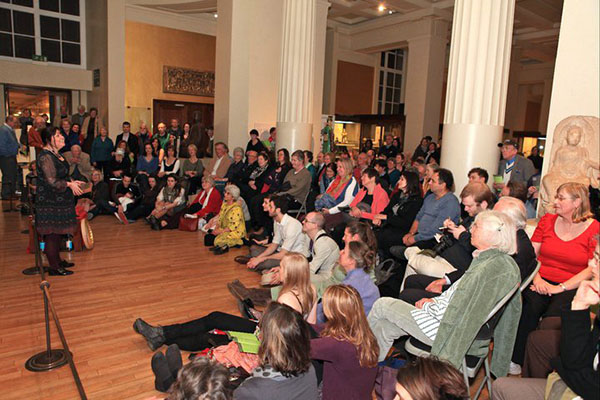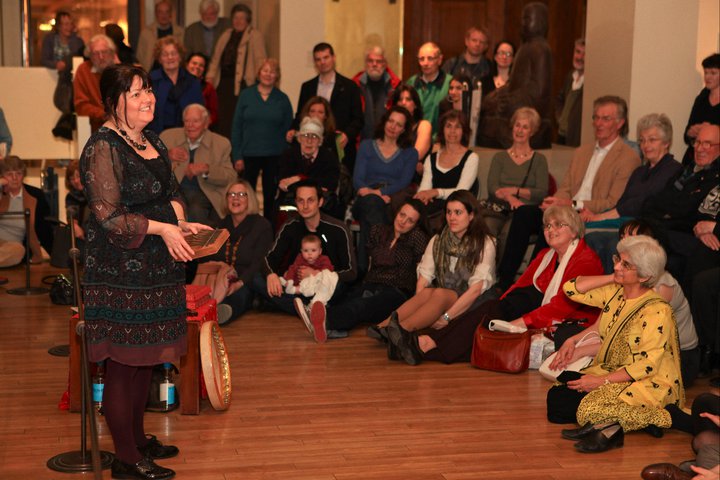Listening creates the text
The writer Umberto Eco, in his collection of essays Six walks in the fictional woods discusses how the reader is a collaborator in the writing process. He describes the “presence of the reader in the story” (Echo 1994:1) and how the reader’s engagement in the story is a vital act that co-creates the narrative.
Storytellers know the audience is fundamental in creating both the performance and the story. As the teller unravels the thread of the tale, the listener holds the thread with their attention. The listener anticipates what is going to happen next, casts the story with people and situations that are close to them, and fills the story with their own emotional experiences and values. Each person hears a slightly different story as it resonates with their life. This emotional involvement feeds the teller. The stronger the listening, the more powerfully the teller can tease out the thread. The story is woven between teller and listener – an invisible weaving of images and emotions.
A performance is nothing without the listener bringing these qualities. But listening is a process which is hidden. And sometimes it is hard for the teller to know what is going on in an audience! A teller might get some help from laughter or facial expression, but generally tellers must rely on sensing an invisible electricity in the space, a deepening quiet, an increasing attention. At the Spanish Storytelling Marathon in Guadalajara, Spanish professional storyteller Kiko expressed the relationship with the listener perfectly, “I had a secret conversation with the audience, I spoke and they answered with their invisible listening.”
The listener seems to be in two places at once. In the outer world of the performance, and in the inner world created by the story. Individual listening is sustained by the wider audience, as listeners become a family. A large ear that responds with a collective wave of exclamations, laughter, silence, clapping. This is something that needs to be experienced and taught from a young age. Inside this group ear, the listener is free to enter the secret space of the inner ear and the imagination. Here the listener can travel to the place where wishes are satisfied, forgotten things remembered, and sorrows spoken of. The collective ear and the personal ear, both feed the experience of listening and make it nourishing.
Umberto Eco believes that fiction is a hidden place we can visit by reading stories. In this fictional space we are able shape the known and the unknown. He writes that stories “give sense to the immensity of things, that happened, are happening or will happen, in the actual world.” (Eco 1994:87)



Leave a Reply